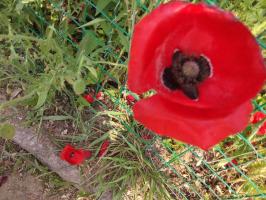Can You Plant Poppy Seeds in Pots?
If you're looking to add a pop of color to your indoor or outdoor space, planting poppies in pots may be a great option. But can you really grow these beautiful flowers in containers? The answer is yes! In this article, we'll explore the benefits of growing poppies in pots, the types of poppies that are suitable for container gardening, and the steps you need to take to ensure your plants thrive.
The Benefits of Growing Poppies in Pots
There are several advantages to planting poppies in pots. Firstly, it allows you to enjoy their colorful blooms up close and personal, even if you don't have a garden. Secondly, it gives you greater control over the soil and the amount of water your plants receive, which can help prevent issues like root rot or soil-borne diseases. Finally, it's an easy way to add some variety to your container garden by introducing a new color or texture.
Types of Poppies Suitable for Container Gardening
While there are dozens of poppy species, not all are well-suited for growing in pots. Here are a few varieties that are particularly adaptable to container gardening:
Oriental Poppies
Oriental poppies are known for their large, showy blooms and contrasting black centers. They prefer full sun and well-draining soil, making them ideal for growing in pots. Be sure to keep the soil moist, as these plants are sensitive to drought.
California Poppies
California poppies are native to the American southwest and are well-suited for hot, dry conditions. These plants have fern-like leaves and bright orange or yellow flowers that bloom from spring to fall. They're perfect for small pots or window boxes and prefer well-draining soil.
Iceland Poppies
Iceland poppies are smaller and more delicate than their Oriental and California counterparts. These plants come in a range of colors, from white and yellow to pink and lilac. They prefer cooler temperatures and can withstand light frost, making them ideal for fall and winter container gardening.
Steps to Growing Poppies in Pots
Now that you know which poppy varieties are best suited for container gardening, here are the steps you need to take to ensure your plants thrive:
Choose the Right Pot
Choose a pot that is at least 6 inches deep, with drainage holes in the bottom to prevent waterlogging. It's important that the pot is the right size for your poppies; too small and their roots will become cramped, too large and the soil will retain too much moisture. Also, consider using a pot with a self-watering feature to keep the soil evenly moist.
Fill the Pot with Soil
Fill the pot with a well-draining potting mix. Don't use garden soil, which can contain pests and diseases that can harm your plants. Add some compost or fertilizer to give your poppies a boost.
Plant the Seeds
Sow the poppy seeds directly into the pot, following the instructions on the packet for planting depth and spacing. Water the soil well after planting.
Water and Fertilize
Water your poppies regularly, making sure the soil is moist but not waterlogged. Fertilize once a month with a balanced liquid fertilizer to keep your plants healthy and vigorous.
Provide Adequate Light
Poppies prefer full sun to partial shade, so place your pot in a sunny spot where it gets at least six hours of direct sunlight every day. If you're growing poppies indoors, put them in a south-facing window or use grow lights to simulate sunlight.
Conclusion
Planting poppies in pots is a great way to add some color and variety to your garden. With the right pot, soil, and care, you can easily grow these beautiful flowers in containers. Whether you choose Oriental, California, or Iceland poppies, you're sure to enjoy the vibrant blooms and graceful foliage that these plants offer.

 how many times do yo...
how many times do yo... how many planted tre...
how many planted tre... how many pine trees ...
how many pine trees ... how many pecan trees...
how many pecan trees... how many plants comp...
how many plants comp... how many plants can ...
how many plants can ... how many plants and ...
how many plants and ... how many pepper plan...
how many pepper plan...































